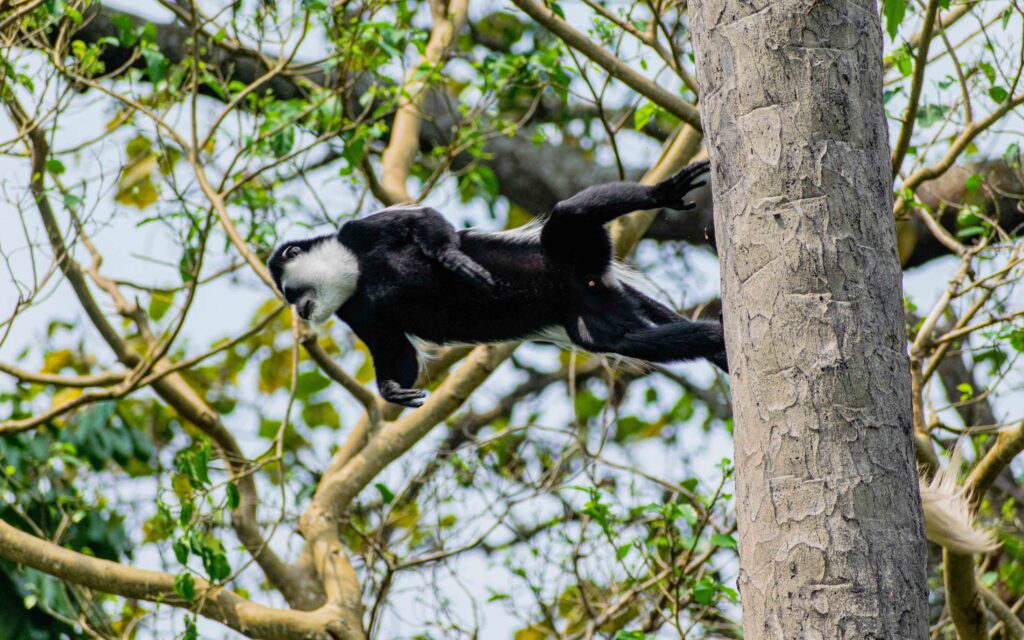Semuliki National Park - The True Birders’ Haven
Semuliki National Park is a biologically diverse that provides shelter to 53 mammals of which 27 are large mammals. 11 species are endemic to the park including the pygmy antelope and two flying squirrel species. It is also a home to the peculiar water chevrotain, known as the fanged deer. The park is also a home to primate species such as chimpanzees, deBrazza’s and Dent’s Mona monkeys with company of forest elephants, buffaloes and more antelopes. There are around 441 species of birds hosted in this forest, with 23 Albertine Rift endemics. Point to note is that, the park is 220kmsq with an altitude of 670-760m above the sea level, pronounced as a national park in 1993, sprawling across the floor of the semuliki valley on the remote side of the rwenzori. Greatly dominated by the easternmost extension of the great Ituri forest of the Congo basin. Remarkably one of Africa’s most ancient and bio-diverse forests of the few to survive the last ice age 12-1800 years ago. Well shaded with West African oil palms and Semuliki River which is the international boundary a miniature of Congo river, the home to great many wildlife populations that are rarely seen not elsewhere in the world. For the last 14 million years the park is gifted by the hot springs that bubble up from the depths to demonstrate the powerful concealed forces
Activities in and outside the park
Bird Watching
Blessed with over 441 bird species, all birders who make it to Semuliki will be astonished with some of Africa’s best forest birding. Sempaya and Ntandi provide excellent viewing of the birds the White-crested Hornbill, Red-billed Dwarf Hornbill, Piping Hornbill, Yellow-throated Nicator. Kirumia River is another interesting birding spot and it’s of great news that the shoebill stork is regularly seen at close quarters on Lake Albert and forest walks are good for tracking water birds.



Nature walks and Hiking
Any serious birder can easily walk through the heart of the park, for about 8 hours following the 13km kirumia trail. Eastern border of the park towards the Semuliki River holds a rare deBrazza’s monkey, and along the Sempaya nature trail, for 8km you can view primates and hot springs, this occurs in the morning and evening, 2-4 hours.




HOT SPRINGS
The long hour trail to the outer male spring leads, through a patch of forest where red tailed monkeys, grey cheeked mangabeys and black and white colobus monkey are common. A tree house e route provides an aerial view. A 30- minute walk through the palm forest from the main road leads to the inner, “female” spring, dominated by a boiling geyser, eggs and plantain can be cooked in these boiling waters and enjoying by hungry hikers.
Game drives
There are 3 tracks that cross the savannah grassland of Toro semuliki wildlife reserve, smaller forest and larger savanah elephants are regularly seen along with crocodiles, buffaloes, with luck you can spot the pygmy hippopotami, leopards, elusive bush babies. Game drives in the wildlife reserve can take nocturnal species such as the white tailed mongoose.
HOW TO GET TO THE PARK
From Kampala to Fort Portal: Kampala-Fort Portal via Mubende which is about 180 Km, 4-5 hrs drive whereas Kampala -Fort Portal via Masaka, Mbarara, ishaka- Kasese is about 465 Km (7-8 hrs). a 4*4 vehicle or 2 wheel can be helpful. By air one can use air strip in Kasese and then drive the final destination
